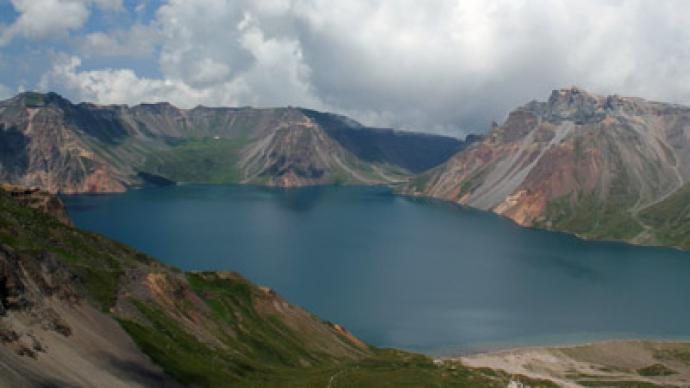
© Flickr/zarukaMount Baekdu
Mt. Baekdu, (Mount Paektu ) the symbolically charged volcano straddling North Korea and China, could erupt again soon, a study warns. Professor Yoon Sung-hyo of Pusan National University says there are indications that the volcano, though quiet for decades, could erupt any time and urged closer monitoring of the situation. The last eruptive activity at the volcano occurred in 1903, though prior past eruptions were among some of the largest in recorded history.
He says the concentration of helium in the volcano has been rising over the last decade or so, and magma levels are creeping up. Yoon has been warning of another eruption since 2010, the first Korean to add his voice to a growing chorus of regional seismologists.
Source: Chosun Media
A volcano responsible for one of the most violent eruptions in history is showing signs of life. Scientists know little about Mount Paektu because most of the mountain lies in North Korea, one of the world's most secretive countries. But for the first time, Western scientists have been allowed to study this sleeping giant, given extraordinary access to determine if — or when — it could wake up, reports CBS News correspondent Seth Doane. "It was quite a special experience the first time," said British vulcanologist James Hammond. "Very much a voyage into the unknown."
For Hammond and Clive Oppenheimer, a professor of volcanologist at Cambridge University, traveling to Mount Paektu was the opportunity of a lifetime. "This is such a big volcano that we know very little about," Hammond said. In an unprecedented move, the two were seemingly chosen at random and invited by the reclusive government in Pyongyang, through a series of intermediaries, to work with local scientists after small earthquakes beneath the volcano stirred fears it could erupt. More than 1,000 years ago Mount Paektu blew its top, sending tons of rock and magma spewing into the air and blanketing the much of the region in a thick layer of ash.
"It's hard really to imagine the scale," Oppenheimer said, "but you're talking about something like 1,000,000 nuclear weapons all going off at the same time in terms of the energy involved." The eruption changed the landscape dramatically, leaving behind a three-mile crater, today known as Heaven Lake. It's that landscape the scientists are studying. "When you try and reconstruct what a past eruption was like, it's like forensic science," Oppenheimer said. "There's a lot of information that you can glean just from the nature of the rocks."
Source: CBS

Reader Comments
to our Newsletter